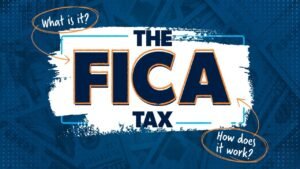Best Ways to Save Money | Smart Saving Tips That Work.
Best Ways to Save Money can feel like a chore, right? Especially with everything costing more these days. But honestly, it doesn’t have to be a huge struggle. There are tons of simple things you can do, starting now, to keep more cash in your pocket. We’re talking about making smart choices that add up over time. So, if you’re ready to boost your savings and feel more in control of your finances, you’ve come to the right place. Let’s find the best way to save money for you in 2025.
Thank you for reading this post, don't forget to subscribe!Best Ways to Save Money Key Takeaways
- Creating a budget is the first step to understanding where your money goes and making intentional spending choices.
- Automating your savings by setting up regular transfers makes it easier to consistently grow your savings without thinking about it.
- Paying off high-interest debt can save you money on interest payments, freeing up more cash for savings.
- Shopping smart, like buying generic, using coupons, and looking for deals, can significantly reduce everyday expenses.
- Maximizing retirement and health savings accounts can offer tax benefits while building long-term financial security.
1. Create A Budget
Getting a handle on your money starts with knowing where it all goes. That’s where a budget comes in. Think of it as a spending plan, a roadmap for your finances. It’s not about restricting yourself; it’s about being intentional with your money.
First things first, you need to figure out your income. This means looking at your net pay – what you actually take home after taxes. If your income changes from month to month, try to average it out over a few months to get a realistic number. Then, list out all your expenses. Everything. Rent or mortgage, utilities, groceries, that streaming service you barely use, even that daily coffee.
Here’s a simple way to break it down:
- Income: Your total take-home pay each month.
- Fixed Expenses: Bills that are the same every month (rent, loan payments, insurance).
- Variable Expenses: Costs that change (groceries, gas, entertainment).
- Savings & Debt Repayment: Money set aside for goals or paying down what you owe.
There are a few popular ways to budget. The 50/30/20 rule is pretty straightforward: 50% of your income for needs, 30% for wants, and 20% for savings and debt. Or, you could try zero-based budgeting, where every single dollar is assigned a job, leaving you with zero at the end. It really just depends on what feels right for you and your lifestyle.
Don’t get too hung up on finding the ‘perfect’ budget right away. The most important thing is to start. You can always tweak it as you go. It’s a living document, after all.
Once you have a basic plan, keep an eye on it. See if it’s working. If you’re consistently overspending in one area or struggling to meet your savings goals, it’s time to make some adjustments. Budgeting is a skill that gets better with practice.
2. Automate Your Savings
Okay, so you’ve got a budget (or you’re working on it). That’s great! But how do you actually make yourself save? One of the easiest ways is to just set it and forget it. Seriously, automating your savings is like having a personal savings assistant that never takes a day off.
Think about it: instead of relying on willpower to transfer money each week or month, you can set up automatic transfers from your checking account to your savings account. This can usually be done right through your bank’s website or app. Best Ways to Save Money You can even set up direct deposit from your paycheck to go straight into savings before you even see it in your checking account. It’s a pretty slick way to build up your savings without having to actively think about it.
Here’s a simple breakdown of how to get started:
- Decide on a transfer amount: Start small if you need to. Even $25 a week adds up.
- Choose a transfer frequency: Weekly, bi-weekly, or monthly – whatever fits your pay cycle.
- Set up the automatic transfer: Log into your bank account and find the option for recurring transfers.
This method takes the guesswork and the temptation out of saving. You’re essentially paying yourself first, and before you know it, that savings balance will start looking a lot healthier. It’s a small step that makes a big difference over time, especially when you’re aiming for specific goals like an emergency fund or a down payment.
Setting up automatic transfers means you’re consistently putting money aside without needing to remember or manually move it. This consistent habit is key to long-term financial growth and reduces the chance of accidentally spending money meant for savings.
3. Reevaluate Your Savings Account
So, you’ve been putting money aside, which is awesome. But have you stopped to think about where that money is actually sitting? Just having it in a regular old savings account at your bank might mean you’re missing out on some serious growth. The national average interest rate for savings accounts is pretty low, like, really low.
It’s time to make your money work harder for you.
Think about moving your savings to a place that offers a better return. High-yield savings accounts are a popular choice because they often come with much higher interest rates than traditional accounts. This means your money grows faster, just by sitting there. Another option could be a cash management account, which sometimes acts like a hybrid checking and savings account and can offer competitive interest rates too. If you’re saving for something specific and know you won’t need the cash for a while, a Certificate of Deposit (CD) might be worth looking into, as they often offer even higher rates, but remember, your money is locked up for a set period.
Here are a few things to consider when looking at different accounts:
- Interest Rate (APY): This is the big one. The higher the Annual Percentage Yield, the more your money grows.
- Accessibility: How easily can you get to your money if you need it? For emergency funds, you want quick access.
- Fees: Always check for any monthly maintenance fees or other charges that could eat into your savings.
- FDIC Insurance: Make sure your money is protected up to $250,000 per depositor, per insured bank, for each account ownership category.
Don’t just let your savings sit stagnant. By shopping around and choosing an account that offers a better yield, you can significantly boost your savings growth without doing any extra work.
4. Plan For Emergencies
Life happens, right? You might get a flat tire, your pet could need a surprise vet visit, or maybe your washing machine decides to quit on you. These aren’t fun, but they’re also not the end of the world if you’re prepared. That’s where an emergency fund comes in. It’s basically a safety net for those unexpected costs that can really mess up your budget.
Most experts suggest aiming for three to six months’ worth of your living expenses. That sounds like a lot, I know. But don’t get discouraged! The most important thing is just to start. Even saving $500 can make a difference when something pops up.
Here’s a simple way to get going:
- Set a small, achievable goal: Maybe start with $500 or $1,000.
- Automate your savings: Set up an automatic transfer from your checking to a separate savings account each payday. Out of sight, out of mind!
- Track your progress: Seeing that balance grow is super motivating.
Think of this fund as your peace-of-mind money. It means you won’t have to dip into your regular savings or, worse, go into debt when something unexpected pops up. It’s all about building a little cushion so life’s little bumps don’t become big financial problems. Keeping this money in a high-yield savings account is a good idea because you can still earn a bit of interest while keeping it accessible.
5. Eliminate Your Debt
Getting rid of debt is a huge step towards financial freedom. It’s like shedding a heavy coat you didn’t realize you were wearing. Best Ways to Save MoneyWhen you owe money, especially on high-interest accounts like credit cards, a big chunk of your income just disappears into interest payments. That’s money that could be going into your savings, investments, or just making your life easier.
So, how do you actually do it? Many people find success with a debt payoff strategy. Two popular ones are the debt snowball and the debt avalanche methods.
- Debt Snowball: You pay off your smallest debts first, regardless of interest rate. Once a debt is paid off, you roll that payment amount into the next smallest debt. This method gives you quick wins and builds momentum.
- Debt Avalanche: You pay off debts with the highest interest rates first, while making minimum payments on the others. This method saves you the most money on interest over time.
Here’s a simple way to approach it:
- List all your debts, including the balance, minimum payment, and interest rate.
- Choose your payoff method (snowball or avalanche).
- Make minimum payments on all debts except the one you’re targeting.
- Put any extra money you have towards your target debt.
- Once a debt is paid off, add its minimum payment to the extra payment for the next debt on your list.
Paying off debt is essentially saving money because you stop paying interest. It frees up your cash flow, giving you more options. Think about it: that money you were sending to a credit card company could now be used to build up your emergency fund or even start investing. It really does feel good to be debt-free, and it opens up so many possibilities for your future finances. If you’re struggling to manage your payments, looking into ways to consistently pay more than the minimum can make a big difference.
6. Shop Generic
You know, those fancy brand names often come with a fancy price tag, and honestly, a lot of the time, you’re paying for the name, not necessarily a better product. When you’re at the grocery store, or even looking at household items, don’t shy away from the store’s own brand. These generic or store-brand options are usually significantly cheaper, and in many cases, the quality is pretty much the same. Think about it – the ingredients or materials are often sourced from the same places.
It’s not just about groceries, either. You can find generic versions of everything from over-the-counter medications to cleaning supplies. It might take a little trial and error to find your favorite store brand for certain items, but the savings can really add up over the year.
Here’s a quick way to think about it:
- Brand Name: You pay a premium for the logo and marketing.
- Generic/Store Brand: You get the same basic product for less.
- Your Wallet: Feels a lot happier at the end of the month.
Seriously, next time you’re grabbing toothpaste or cereal, give the generic option a shot. You might be surprised at how little difference there is, besides the price tag.
7. Make A List Before You Shop
You know that feeling when you walk into a store with a plan, but then you leave with a cart full of things you didn’t even know you needed? Yeah, me too. Best Ways to Save Money It’s way too easy to get sidetracked, especially when there are shiny new things everywhere. That’s why making a shopping list before you head out is such a simple, yet powerful, money-saving move.
It forces you to be intentional about your purchases. Instead of just browsing and grabbing whatever catches your eye, you’re focused on what you actually need. This helps cut down on impulse buys, which are often the biggest budget busters. Think of it as a roadmap for your shopping trip – it keeps you on track and prevents you from taking detours into the land of unnecessary spending.
Here’s how to make your list work harder for you:
- Check your pantry and fridge first: Before you even think about what to buy, see what you already have. You might be surprised to find you have ingredients for a meal or that you’re already stocked up on certain items.
- Categorize your list: Grouping items by store section (like produce, dairy, or cleaning supplies) can save you time and prevent backtracking, which often leads to seeing more tempting items.
- Be specific: Instead of just writing “fruit,” jot down “3 apples” or “1 lb of bananas.” This helps you buy only what you need and avoid overbuying, which can lead to food waste.
Sticking to your list isn’t just about saving money in the moment; it’s about building a habit of mindful consumption. It trains your brain to question purchases and consider whether they align with your financial goals. It’s a small step that can have a big impact over time.
8. Use A Gas App
Gas prices can really add up, can’t they? It feels like every time you turn around, they’ve gone up again. But there are ways to fight back against those rising costs. Using a gas app is a super simple way to find the cheapest fuel near you.
These apps are pretty neat. They use crowdsourced data, meaning other drivers report the prices they see at different stations. This gives you a real-time look at where you can fill up for less. It’s not just about finding the lowest price, though. Some apps also offer rewards or cashback when you use them to pay for gas. It’s like getting a little bonus just for filling your tank.
Here’s how they generally work:
- Download and open the app.
- Allow location services so it can find stations near you.
- Browse the map to see prices at different stations.
- Check for rewards or cashback offers before you decide where to go.
It’s a small change, but it can make a difference over time. You might be surprised how much you can save by just taking a minute to check your phone before heading to the pump. It’s a smart move for your wallet, especially with how unpredictable fuel costs can be. Best Ways to Save Money You can even find apps that help you track your fuel efficiency, giving you more insight into your car’s performance and how to improve it. For example, apps like Upside can help you find savings and even offer cashback on your purchases, making your fuel stops more rewarding. It’s worth exploring what’s available to see which gas app best fits your needs.
9. Minimize Restaurant Spending
Eating out is a big one for most people, and honestly, it adds up faster than you think. That daily coffee run or weekly lunch with friends can really chip away at your savings goals. Making a conscious effort to dine out less frequently is one of the most effective ways to boost your bank account.
Think about it: a $15 meal at a restaurant could easily be a $4 meal if you make it at home. It might seem small, but over a month, those savings really start to show. A recent study even showed that a huge chunk of people are cutting back on dining out, so you’re definitely not alone in this. Many Americans are cutting back.
Here are a few ideas to help you cut back:
- Plan your meals: Knowing what you’re going to eat for the week can prevent those last-minute “I don’t want to cook” moments that lead to takeout.
- Pack your lunch: This is a classic for a reason. Even if you just pack a sandwich and some fruit, it’s way cheaper than buying lunch.
- Embrace happy hour: If you do go out, look for places with happy hour deals or early bird specials. You can often get appetizers or smaller entrees at a discount.
- Split entrees: If you’re dining with someone, consider sharing a main course. Portions are often generous enough to satisfy two people, especially when paired with an appetizer.
- Drink water: Skipping sodas, juices, or alcoholic beverages can save you a surprising amount on your bill.
It’s not about never enjoying a meal out again, but about being more intentional with when and how you do it. Maybe swap those three restaurant meals a week for just one, or make it a special occasion rather than a routine.
Consider setting a specific budget for dining out each month. Once it’s gone, it’s gone! This kind of intentionality can make a big difference.
10. Get Discounts On Entertainment
Entertainment doesn’t have to drain your bank account. There are plenty of ways to enjoy yourself without spending a fortune. Look for local events; many communities offer free concerts, movie nights in the park, or discounted tickets to local theater productions. Museums often have free admission days, so check their schedules.
Best Ways to Save Money Consider joining loyalty or membership programs at your favorite venues. These can offer perks like cheaper tickets, discounted concessions, or even early access to special events. If you’re a student, military member, or senior, always ask about available discounts – you might be surprised how many places offer them.
When it comes to streaming, avoid subscribing to every service. Instead, pick one or two that have the content you watch most, or look for bundle deals that combine multiple platforms. Sometimes, sharing an account with family or close friends (if the terms of service allow) can also cut costs.
Bundling services or looking for deals can make a big difference.
Here are a few ideas:
- Check community calendars for free local events.
- Ask about student, senior, or military discounts.
- Join rewards programs at movie theaters or performance venues.
- Explore free admission days at museums.
Don’t forget to pack your own snacks and drinks when heading out to events. Buying concessions can add up quickly, and bringing your own is a simple way to save money.
11. Bring Your Own Snacks
Heading out for the day, whether it’s a family outing or just a solo trip to the park, can get expensive fast, especially when you factor in food and drinks. Packing your own snacks and beverages is a super simple way to keep more cash in your wallet. Think about it: those convenience store prices or venue markups add up quicker than you might realize. It’s not just about saving money, either; having your favorite treats on hand can prevent those mid-adventure hunger pangs and keep everyone in a better mood.
When you’re planning an excursion, consider these ideas:
- Trail mix or nuts: Easy to portion and packed with energy.
- Fruit: Apples, bananas, or grapes are portable and refreshing.
- Sandwiches or wraps: A more substantial option that travels well.
- Water bottles: Staying hydrated is key, and refilling bottles is free.
Bringing your own snacks is a small habit that can make a big difference in your overall spending. It’s about being prepared and making conscious choices that align with your financial goals. Plus, you get to control what you’re eating, which is a nice bonus.
For some great ideas on what to pack, you can check out healthy and convenient snack ideas. It’s a small change, but it really does add up over time.
12. Buy Secondhand
Seriously, think about buying used items before you hit the regular stores. It’s a total game-changer for your wallet. Kids, especially, grow out of clothes so fast, and let’s be honest, they can be messy. Instead of buying new outfits every few months, check out thrift stores or consignment shops. You can often find perfectly good clothes, toys, and even furniture for a fraction of the original price.
It’s not just for kids’ stuff, either. You can find great deals on books, home decor, electronics, and even tools. The key is to be patient and look around. Sometimes you have to dig a little, but the savings can be huge. Plus, you’re giving items a second life, which is pretty cool for the planet.
Here are a few places to start:
- Thrift Stores: These are great for everyday clothing, housewares, and random finds.
- Consignment Shops: Often have slightly higher quality items, and you might even be able to sell your own unwanted goods there.
- Online Marketplaces: Think Facebook Marketplace, Craigslist, or dedicated apps. You can find almost anything, but always be cautious and meet in safe, public places.
- Garage Sales/Yard Sales: Hit or miss, but when you find a gem, it’s usually a steal.
Remember to inspect items carefully before buying. Check for wear and tear, missing parts, or any damage that might make the item unusable or require costly repairs. A little inspection goes a long way in making sure your secondhand find is a true bargain.
13. Stick To DIY Gifts And Festivities
Holidays and birthdays can really add up, can’t they? Instead of buying everything new, think about making some things yourself. It’s a great way to save money and often makes for a more personal touch.
For gifts, if you’re a bit crafty, you could knit a scarf, bake some cookies, or even put together a “coupon book” for things like doing chores or giving a massage. For decorations, why not try making your own ornaments for the tree or carving a pumpkin for Halloween? Even a handmade card can mean a lot.
- DIY Gifts: Consider baking, crafting, or creating personalized items.
- Festive Decor: Make your own ornaments, garlands, or seasonal decorations.
- Personalized Touches: Handwritten notes or custom playlists add a special feel without costing much.
Making things yourself can be a fun activity, and the effort often shows more than the price tag. Plus, you control exactly what goes into it, which can be a bonus if you’re trying to avoid certain ingredients or materials.
14. Take Advantage Of Coupons, Deals, And Rewards Programs
You know, it’s easy to just pay the sticker price for things, but why would you when there are so many ways to save a few bucks? Seriously, think about all those little discounts adding up. It’s like finding money you didn’t even know you had.
Don’t leave money on the table – actively seek out savings. Signing up for email lists from your favorite stores is a good start. They often send out exclusive deals or early access to sales. Many also offer text alerts, which can be handy for flash sales. And don’t forget about loyalty programs. Sticking with a brand or store usually means you’ll get perks, whether that’s freebies or special discounts just for being a repeat customer.
Here are a few ways to get started:
- Sign up for store loyalty programs: Earn points or get special discounts just for shopping where you already do.
- Subscribe to email and text alerts: Get notified about sales and receive digital coupons directly.
- Look for coupon codes online: Before you buy anything online, do a quick search for coupon codes. Sometimes, just adding “coupon code” after the store name in your search engine can reveal savings.
- Use browser extensions: Tools like Honey or Rakuten can automatically find and apply coupons when you’re shopping online. They often give you cash back too, which is like getting paid to shop.
It’s not about being cheap; it’s about being smart with your money. Every dollar saved is a dollar you can put towards something else, whether that’s paying off debt, saving for a goal, or just having a little extra breathing room.
Using a credit card that matches your spending habits can also be a smart move. If you buy a lot of gas or groceries, find a card that gives you cash back on those purchases. Just remember to pay your balance in full each month to avoid interest charges, which can quickly cancel out any rewards you earn. It’s all about making these programs work for you, not the other way around.
15. Install Browser Extensions
You know, when you’re shopping online, it’s easy to feel like you’re missing out on the best deals. That’s where browser extensions come in handy. These little tools can automatically search for and apply coupons at checkout, saving you money without you even having to think about it.
Think of them as your personal savings assistant. Many extensions also offer cash back on purchases from certain retailers, which is like getting a small refund on things you were going to buy anyway. It’s a pretty neat way to chip away at your total cost.
Here are a few popular ones to consider:
- Honey: Known for automatically finding and applying coupon codes.
- Rakuten (formerly Ebates): Offers cash back at thousands of online stores.
- Camelcamelcamel (for Amazon): Tracks price history so you can see if a deal is actually good.
It’s worth checking out a few to see which ones work best for your shopping habits. Just remember to only install extensions from trusted sources, and maybe do a quick check on their privacy policies. It’s a simple step that can add up to real savings over time.
16. Max Out Retirement Contributions
Thinking about retirement might seem far off, but getting your contributions in order now is a really smart move for your future self. The more you put into retirement accounts, the less taxable income you’ll have each year. It’s like a double win: you save for later and save on taxes today.
For 2025, you can contribute up to $23,500 to your 401(k). If you’re 50 or older, you can add an extra $7,500 as a catch-up contribution. That’s a lot of money, but if you can manage it, it makes a big difference. Don’t forget about employer matches either – that’s basically free money you shouldn’t leave on the table. Even a small increase can add up significantly over time.
Here’s a quick look at the contribution limits for 2025:
| Account Type | Contribution Limit (Under 50) | Catch-Up Contribution (50+) |
|---|---|---|
| 401(k) | $23,500 | $7,500 |
| IRA | $7,000 | $1,000 |
Boosting your retirement savings isn’t just about the future; it actively reduces your current tax burden. By contributing more, you lower the amount of your income that’s subject to taxes, which can lead to a smaller tax bill right now. It’s a strategy that pays off both short-term and long-term.
If you’re not sure where to start, check if your employer offers a retirement plan. Many plans allow you to automatically increase your contributions by a small percentage each year. This way, you barely notice the change in your paycheck, but your retirement nest egg grows steadily. It’s a simple way to make sure you’re consistently saving for the long haul. You can also explore options like an IRA for additional savings. Making these contributions is a key step in securing your financial future, and it’s worth looking into how to maximize them each year. Consider checking out resources on 401(k) contribution limits to get a clearer picture.
17. Put Money In A Health Savings Account (HSA)
Thinking about ways to save money, especially on taxes? You might want to look into a Health Savings Account, or HSA. It’s a pretty neat tool that can help lower your overall taxable income. Basically, when you put money into an HSA, those contributions are often tax-deductible. Best Ways to Save Money This means you can subtract that amount from your income before taxes are calculated, which can lead to a smaller tax bill.
HSAs are typically paired with high-deductible health plans (HDHPs). They offer a triple tax advantage: contributions are tax-deductible, the money grows tax-free, and withdrawals for qualified medical expenses are also tax-free. It’s a way to save for healthcare costs while also getting a tax break.
Here’s a quick look at how it works:
- Contribute: You or your employer can put money into the HSA.
- Grow: The money can be invested and grow over time, tax-free.
- Spend: Use the funds for qualified medical expenses, tax-free.
It’s important to remember that HSAs are specifically for healthcare-related costs. Make sure you understand what qualifies before you start spending. Using the funds for non-medical things will usually result in taxes and penalties.
So, if you have a qualifying health plan and anticipate medical expenses, putting some money into an HSA could be a smart move for your finances in 2025. It’s a way to get ahead of healthcare costs and get a tax benefit at the same time.
18. Track Your Inventory Of Household Supplies
You know, it’s funny how quickly things like paper towels, toothpaste, and cleaning sprays disappear. One minute you’ve got a full cupboard, and the next, you’re making an emergency trip to the store. Keeping tabs on what you have can save you a surprising amount of money. It stops those last-minute, full-price purchases because you ran out of something important.
Think about it: when you know you have three bottles of dish soap already, you’re less likely to grab another one just because it’s on sale. This also helps prevent overbuying, which is just throwing money away. You can use a simple spreadsheet or even a dedicated app to keep track. I’ve heard good things about Sortly for personal use, which is originally for businesses but has a free version for individuals. It makes it easy to see what you have and what you’re running low on.
Here’s a basic way to get started:
- Categorize: Group items like cleaning supplies, toiletries, kitchen staples, etc.
- List Quantities: Note how many of each item you currently have.
- Set Reorder Points: Decide on a minimum quantity for each item before you need to buy more.
It’s not just about knowing what you have; it’s about buying smart. When you see a good deal on something you use regularly, like laundry detergent, you can stock up if you have the space and know you’ll use it before it expires. But without tracking, you might end up with way too much of something you rarely use, or worse, forget you even bought it.
This habit helps you plan your shopping trips better and avoid impulse buys when you’re just trying to grab one thing. Plus, it makes grocery shopping way less stressful when you’re not guessing if you’re out of something.
19. Shop Consignment And Thrift Stores
You know, sometimes the best finds aren’t in the shiny new stores. Shopping at thrift and consignment shops can seriously cut down your expenses. It’s like a treasure hunt, but for everyday stuff. You can find clothes, furniture, books, and all sorts of things that someone else didn’t need anymore, but are still perfectly good.
It’s a fantastic way to get more for your money.
Here’s why it’s a smart move:
- Cost Savings: Prices are usually a fraction of what you’d pay for new items. Think about clothing, for example. Kids grow so fast, and buying them new outfits every few months can get expensive. Thrift stores are lifesavers for that.
- Unique Finds: You can often discover one-of-a-kind pieces that you won’t see on everyone else. It’s a great way to develop your personal style without breaking the bank.
- Sustainability: Buying secondhand is also better for the planet. You’re giving items a second life and reducing waste, which feels pretty good.
When you’re browsing, it’s always a good idea to compare prices, even at these places. Sometimes, you might find a deal that’s just okay, but other times, you’ll hit the jackpot. Just give items a good once-over to make sure they’re in decent shape before you buy. It’s not just about saving money; it’s about being a savvy shopper and making more sustainable choices.
20. Get Creative With Gifts

Gift-giving holidays and birthdays can really add up, right? The average person shells out a good chunk of change each year, and it’s easy to see why. But you don’t have to break the bank to show someone you care. Getting creative with gifts is a fantastic way to save money while still making a big impression.
Think about what you’re good at. Are you a baker? Whip up some homemade cookies or a special cake. Maybe you’re artistic – a handmade painting or drawing can be incredibly meaningful. Even putting together a thoughtful care package with items you know they’ll love can be a winner. It’s not about the price tag; it’s about the personal touch.
Consider giving the gift of your time or an experience. Perhaps you could offer to help a friend with a project, babysit for a sibling, or plan a fun outing like a picnic in the park or a visit to a free local museum. These kinds of gifts often create lasting memories.
Here are a few ideas to get you started:
- Handmade Crafts: Knitted scarves, painted mugs, custom jewelry, or even a well-written poem.
- Edible Gifts: Baked goods, homemade jams or preserves, or a special spice blend.
- Experience Gifts: Offer to cook a meal, provide a massage, help with gardening, or plan a themed movie night.
- Personalized Playlists: Curate a music playlist based on their favorite genres or artists.
Planning ahead is key. If you know a birthday or holiday is coming up, start thinking about your creative gift ideas early. This gives you time to gather materials if you’re making something or to find good deals if you plan to buy a few components. It also helps spread out the cost, making it much more manageable.
21. Find Ways To Get Free Items
Who doesn’t love getting something for free? It’s a fantastic way to stretch your budget further. Think about all the things you might need or want, and then see if there’s a way to snag them without spending a dime. It often just takes a little bit of looking around and knowing where to check.
One of the best places to start is with online communities. Groups like The Freecycle Network or local “Buy Nothing” groups on social media are all about people giving away items they no longer need. It’s a great way to find furniture, household goods, or even kids’ toys. You can often find these opportunities listed on platforms like Nextdoor or Facebook Marketplace. It’s a win-win: you get something you need, and someone else declutters their home.
Don’t forget about your birthday! Many businesses offer freebies or discounts to celebrate your special day. Signing up for email newsletters from your favorite stores and restaurants can alert you to these kinds of perks. You might get a free coffee, a discount on a meal, or even a free product. It’s like a little treasure hunt throughout the year.
Consider also looking for free in-game items if you play games like Roblox. Sometimes, completing certain tasks or using promo codes can get you virtual goods without any cost. It’s a small perk, but it adds up.
Here are a few ideas to get you started:
- Join local online groups for item exchanges.
- Sign up for birthday freebies from your favorite brands.
- Look for free events or samples offered by local businesses.
- Check out library programs for free activities and resources.
Getting free items isn’t just about saving money; it’s also about being resourceful and participating in community sharing. It encourages a more sustainable way of consuming by giving items a second life instead of buying new.
22. Cash In On Your Birthday
Your birthday is a great time to snag some freebies and discounts. Many businesses offer special deals to celebrate your big day, and it’s a simple way to save a little cash or get something you’ve been wanting without spending your own money. Think about signing up for email lists or loyalty programs for your favorite restaurants, shops, and online retailers a few weeks before your birthday. You might be surprised at how many places offer a birthday treat.
Here are some common birthday perks you might find:
- Free food or drinks: Many restaurants and coffee shops give you a free item on your birthday.
- Discounts: Some stores offer a percentage off your purchase or a fixed dollar amount off.
- Loyalty points or credits: You might get bonus points added to your account that can be redeemed later.
It’s a good idea to keep a running list of places that offer birthday deals. You can even plan out your birthday week to take advantage of multiple offers. Just remember to check the terms and conditions, as some deals might require a minimum purchase or have an expiration date.
Don’t underestimate the power of these small perks. Over the course of a year, accumulating these birthday freebies and discounts can add up to a noticeable amount of savings, effectively giving you a little bonus just for celebrating another year.
23. Lower Your Car Costs
Owning a car racks up a lot of expenses, from payments and insurance to gas and upkeep. It’s easy to spend a ton of money here without even realizing it.
One of the biggest ways to save is by rethinking your insurance. Don’t just let your policy auto-renew. Shop around and compare quotes from different companies. You might be surprised at how much you can save just by switching providers. Refinancing your auto loan is another smart move; it could cut down the total interest you pay over the life of the loan.
Here are a few other ideas to keep your car expenses in check:
- Drive less: For short trips, try walking, biking, or using public transport. It’s good for your wallet and your health.
- Carpool: If you have coworkers or friends who live nearby and head in the same direction, share rides and split gas costs.
- Consider a used car: New cars lose value fast. A well-maintained used car can save you a significant amount upfront and over time.
- Stick to the maintenance schedule: Regular oil changes and tune-ups can prevent bigger, more expensive problems down the road.
Keeping up with your car’s maintenance isn’t just about preventing breakdowns; it also helps your vehicle run more efficiently, which can lead to better gas mileage and fewer costly repairs in the long run. It’s a proactive approach that pays off.
24. Reduce Gas Costs

Gas prices can feel like they’re always on the move, and not usually in a good way for our wallets. While you can’t control the global market, you can definitely control how much you spend at the pump. It’s all about being smart with your driving habits and where you choose to fill up.
First off, think about how you drive. Smooth acceleration and braking are your best friends. Slamming on the gas and then hitting the brakes hard wastes a ton of fuel. Try to maintain a steady speed whenever possible. Also, keep an eye on your tires; properly inflated tires can make a surprising difference in your car’s fuel efficiency. Don’t forget regular maintenance either – an engine that’s running well simply uses less gas.
Here are a few more ways to cut down on fuel spending:
- Combine errands: Instead of making multiple short trips, plan your outings so you can get everything done in one go. This cuts down on cold starts, which use more gas.
- Check your tire pressure: Underinflated tires increase rolling resistance, making your engine work harder and burn more fuel. Aim for the pressure recommended in your car’s manual.
- Drive the speed limit: Higher speeds mean significantly worse gas mileage. Stick to the posted limits to save money and stay safe.
Using apps can be a game-changer for finding the cheapest gas nearby. You can compare prices across different stations and plan your fill-ups accordingly. It takes just a minute to check, and the savings can add up quickly over time.
Consider using a gas app to find the most affordable fuel in your area. Many grocery stores and warehouse clubs also offer fuel points or discounts, which can lead to substantial savings if you shop there regularly. Every little bit helps when it comes to keeping your gas expenses in check, and these strategies can really make a difference in your monthly budget. You can find great resources for comparing prices and learning more about fuel efficiency on sites like GasBuddy.
25. Use Car Sharing Services and more
Owning a car is expensive, no doubt about it. The costs add up fast, from insurance and gas to maintenance and those inevitable repairs. If you don’t drive a lot, or maybe just need a car for occasional trips, looking into alternatives can really save you some cash.
Car-sharing services are becoming a pretty popular option. Instead of owning a car outright, you can rent one by the hour or day. This can be way cheaper than traditional car rentals, especially for short periods. You might find that using these services is even more budget-friendly than relying on taxis or ride-shares if your travel needs are infrequent. It’s worth doing a little research to see which car-sharing services make the most sense for your area and how often you’d actually use them.
Beyond car sharing, think about other ways to cut down on transportation expenses:
- Walk or bike: For short distances, ditch the car altogether. It’s free, good for your health, and you’ll save on gas.
- Public transport: If your city has a decent bus or train system, give it a try. Some employers even offer commuter benefits.
- Carpool: Team up with friends or coworkers heading in the same direction. Splitting gas costs makes a difference.
Rethinking how you get around can lead to significant savings. It’s not just about the big purchases; it’s the daily habits that really impact your wallet over time. Consider what makes the most sense for your lifestyle and your budget.
Putting It All Together
So, we’ve covered a lot of ground on how to save money in 2025. It might seem like a lot at first, but remember, it’s about making small, consistent changes. Start with a budget, track your spending, and look for those little opportunities to cut back. Whether it’s packing your lunch, switching to generic brands, or automating your savings, every bit adds up. Don’t get discouraged if you slip up; just get back on track. Building good money habits takes time, but the payoff – more financial freedom and peace of mind – is totally worth it.
Frequently Asked Questions
What’s the first step to saving more money?
The very first thing you should do is create a budget. Think of it as a plan for your money. It helps you see where your money is going so you can decide where you want it to go instead. This way, you can find places to cut back and save.
How can I make saving money easier?
Automating your savings is a great trick. You can set up your bank account so that a certain amount of money is moved to your savings account automatically every payday. You might not even miss the money, and it grows over time without you having to think about it.
Is it important to have an emergency fund?
Yes, absolutely! An emergency fund is like a safety net for unexpected events, like a car breaking down or a sudden medical bill. Having this fund means you won’t have to dip into your regular savings or go into debt when something unexpected happens.
How can I save money when I go grocery shopping?
When you shop for groceries, always make a list of what you need before you go. Also, try buying store-brand or generic items instead of name brands. They are usually much cheaper, and often just as good.
What are some ways to save money on entertainment?
Look for free activities in your town, like free museum days or local concerts. You can also pack your own snacks and drinks when you go out to avoid paying high prices at events. Sometimes, just bringing your own water bottle can save you a few dollars.
How can I save money on gifts?
Instead of buying new, consider shopping at thrift stores or consignment shops for gifts. You can also save a lot by making your own gifts, like baking cookies or creating something handmade. Planning ahead and looking for sales or using coupons also helps a lot.













